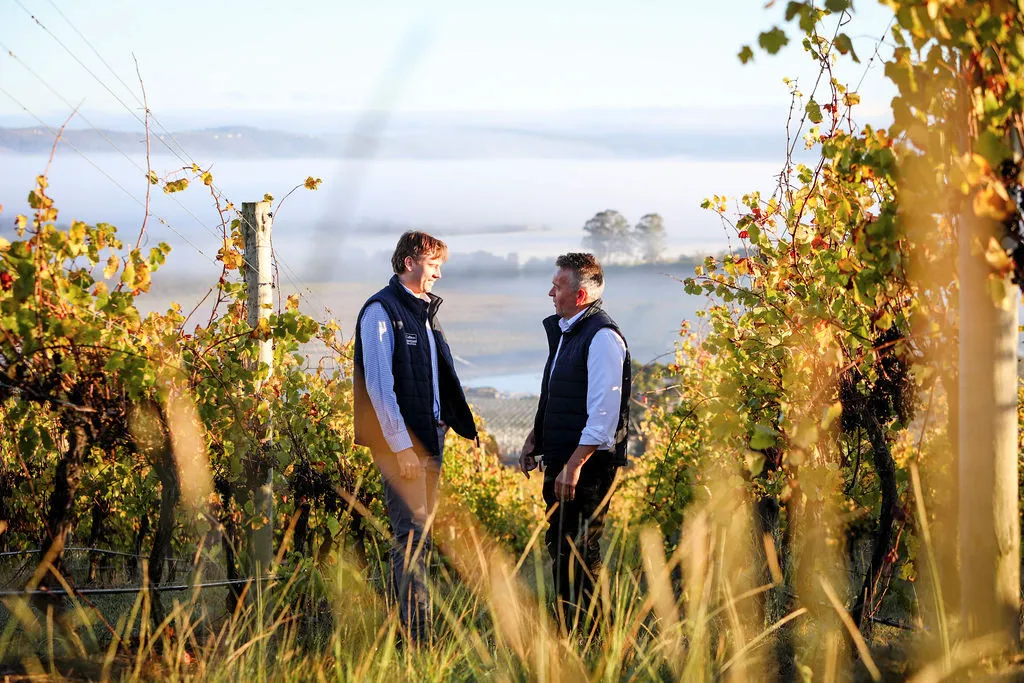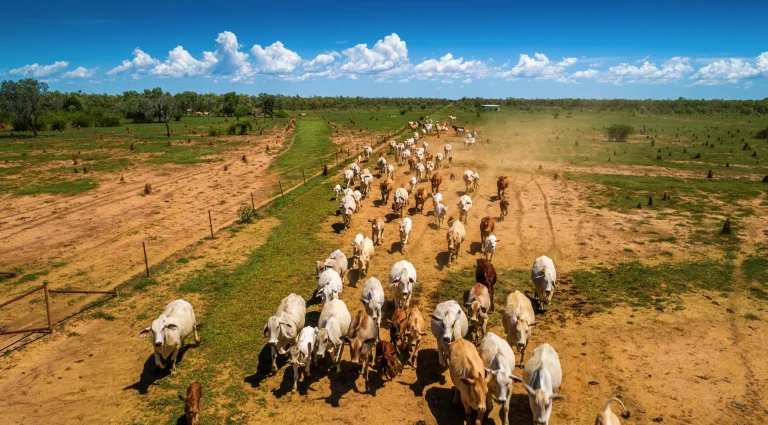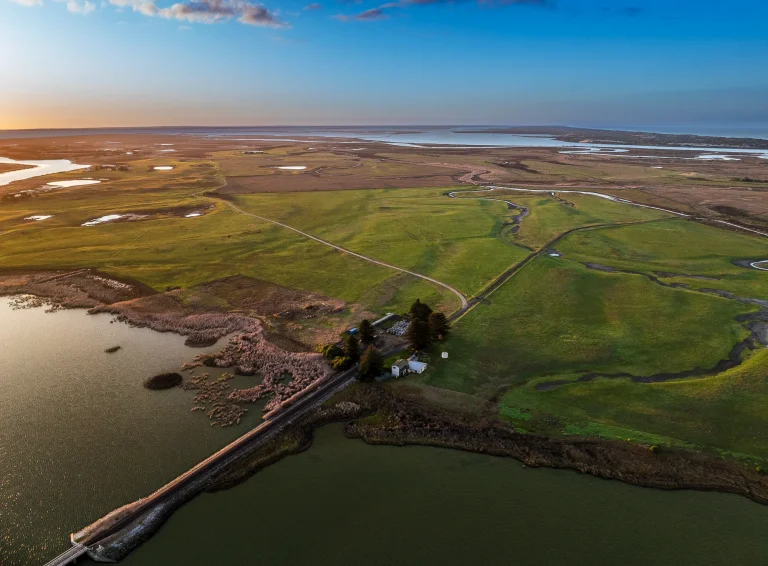Guidelines for Investing in Australia’s Dairy Farming Sector
Australia’s dairy farming sector presents compelling investment opportunities for those seeking to enter the agricultural property market. Understanding the guidelines for investing in Australia’s dairy farming sector requires careful consideration of multiple factors, from land quality and water access to regulatory requirements and market dynamics. The sector has shown resilience through various economic cycles, making it an attractive option for investors looking to diversify their portfolios with tangible agricultural assets.
At Agribusiness Horizons, we specialize in facilitating high-value dairy farming transactions across Australia. Our expertise in agricultural property markets, combined with our comprehensive understanding of the dairy sector’s unique requirements, positions us to guide investors through the complexities of dairy farm acquisitions. Whether you’re considering your first dairy property investment or expanding an existing portfolio, our team provides the specialized knowledge and strategic support needed to make informed decisions. We encourage potential investors to contact us for personalized guidance on dairy farming investment opportunities.
This comprehensive guide will examine the essential considerations for dairy farming investments, from initial property evaluation through to long-term operational planning, providing you with the knowledge needed to navigate this specialized agricultural sector successfully.
Understanding Australia’s Dairy Farming Landscape
Australia’s dairy industry operates across diverse climatic zones, from the high-rainfall regions of Victoria and Tasmania to the irrigated areas of New South Wales and Queensland. The sector has undergone significant transformation over recent decades, with consolidation leading to larger, more efficient operations that require substantial capital investment but offer improved economies of scale.
The geographical distribution of dairy farming reflects natural advantages, with the southern states dominating production due to favorable climate conditions and established infrastructure. Victoria accounts for the largest share of national milk production, followed by New South Wales, Queensland, and Tasmania. Each region presents distinct investment characteristics, from the premium dairy lands of Gippsland to the emerging opportunities in Queensland’s subtropical regions.
Modern dairy farming operations increasingly focus on efficiency, sustainability, and technological integration. Investors must consider these evolving industry standards when evaluating potential acquisitions, as properties that align with contemporary farming practices typically command higher values and demonstrate better long-term viability.
Key Investment Considerations for Dairy Properties
Land Quality and Productivity Assessment
Successful dairy farming investment begins with thorough land evaluation. Soil quality, topography, drainage, and pasture productivity form the foundation of any dairy operation. Premium dairy land typically features fertile soils with good water-holding capacity, gentle slopes that facilitate machinery operation, and natural or improved drainage systems that prevent waterlogging during wet periods.
Pasture quality directly impacts carrying capacity and milk production potential. Investors should assess existing pasture species, their condition, and the potential for improvement through oversowing, fertilization, or renovation. The presence of improved pastures, particularly perennial ryegrass and clover combinations, indicates higher productivity potential and reduced establishment costs for new owners.
Climate considerations play a crucial role in dairy farming success. Regions with consistent rainfall distribution or reliable irrigation access provide greater operational stability. Understanding local weather patterns, including seasonal variations and drought frequency, helps investors evaluate long-term productivity risks and opportunities.
Water Security and Infrastructure
Water availability represents perhaps the most critical factor in dairy farming investment decisions. Successful dairy operations require substantial water supplies for drinking, cleaning, and irrigation purposes. Properties with secure water rights, whether through rainfall reliability or irrigation entitlements, command premium valuations in the current market.
Infrastructure assessment encompasses dairy facilities, fencing, laneways, and storage systems. Modern dairy sheds with efficient milking systems, adequate cow housing, and proper effluent management systems indicate lower capital requirements for new operators. The condition and capacity of existing infrastructure significantly influence both acquisition costs and ongoing operational efficiency.
Irrigation infrastructure, where applicable, requires careful evaluation. Efficient irrigation systems, including center pivots, flood irrigation, or sophisticated drip systems, enhance property productivity and drought resilience. The condition of channels, pumps, and distribution systems affects both immediate operational capacity and future capital requirements.
Regulatory and Compliance Framework
Dairy farming operations must comply with numerous regulatory requirements covering food safety, environmental protection, and animal welfare. Understanding these obligations helps investors assess ongoing operational costs and potential compliance risks. Properties with established compliance systems and documentation typically present lower regulatory risks for new owners.
Environmental regulations increasingly influence dairy farming operations, particularly regarding effluent management, waterway protection, and nutrient management. Properties with appropriate environmental management systems and compliance histories reduce regulatory risks and potential remediation costs for investors.
Planning regulations vary significantly across different local government areas, affecting expansion possibilities and operational flexibility. Investors should understand local planning constraints, including setback requirements, expansion limitations, and potential conflicts with neighboring land uses.
Financial Analysis and Investment Metrics
Valuation Methodologies
Dairy property valuation requires specialized approaches that consider both land value and operational capacity. The productive capacity method evaluates properties based on their ability to support dairy cows and generate milk income. This approach considers factors such as carrying capacity, milk production potential, and operational efficiency to determine fair market value.
Comparable sales analysis provides market-based valuation benchmarks, though dairy property sales can be limited in some regions. Successful analysis requires understanding the specific characteristics of comparable properties, including land quality, infrastructure condition, and water security arrangements.
Income capitalization methods evaluate properties based on their potential to generate returns through dairy operations. This approach requires detailed analysis of potential milk production, operating costs, and prevailing commodity prices to determine sustainable income streams and appropriate capitalization rates.
Return on Investment Calculations
Dairy farming investments typically generate returns through multiple channels, including milk production income, capital appreciation, and potential diversification opportunities. Calculating potential returns requires understanding local milk pricing mechanisms, seasonal production patterns, and operating cost structures.
Operational efficiency significantly influences investment returns. Properties with modern infrastructure, efficient layouts, and proven management systems typically demonstrate superior financial performance. Investors should evaluate labor requirements, feed costs, and veterinary expenses when projecting operational returns.
Capital appreciation potential varies across different regions and property types. Premium dairy regions with limited land supply often demonstrate steady appreciation, while emerging areas may offer higher growth potential but with increased risk. Understanding local market dynamics helps investors align their expectations with realistic appreciation scenarios.
Property Selection and Due Diligence
Successful dairy farming investment requires comprehensive due diligence that goes beyond standard property inspections. Soil testing, water quality analysis, and infrastructure condition assessments provide essential information for investment decisions. Professional agronomic advice helps investors understand productivity potential and improvement opportunities.
Financial due diligence should include analysis of historical production records, operating costs, and income streams. Properties with documented performance histories provide greater certainty for investment projections. Understanding seasonal variations in production and costs helps investors prepare for operational realities.
Legal due diligence encompasses title verification, easement identification, and compliance assessment. Water rights verification requires particular attention, as these entitlements significantly influence property values and operational capacity. Professional legal advice ensures investors understand all obligations and opportunities associated with potential acquisitions.
Regional Market Dynamics and Opportunities
Different regions present distinct investment characteristics that influence both acquisition costs and operational potential. Victoria’s established dairy regions offer stability and infrastructure advantages but typically command premium prices. New South Wales provides diverse opportunities, from intensive coastal operations to large-scale inland properties with irrigation access.
Queensland’s expanding dairy sector presents opportunities for investors seeking growth potential in subtropical dairying. The state’s year-round growing season and improving infrastructure create favorable conditions for dairy expansion, though investors must understand the specific management requirements of subtropical dairy systems.
Tasmania’s dairy industry benefits from consistent rainfall and cool temperatures that favor pasture growth and cow comfort. The state’s reputation for premium dairy products and sustainable farming practices creates additional value opportunities for investors focused on high-quality production systems.
Comparison of Investment Approaches
| Investment Approach | Risk Level | Capital Requirements | Management Intensity | Return Potential |
|---|---|---|---|---|
| Established Operations | Moderate | High | Moderate | Steady |
| Development Properties | Higher | Very High | High | Higher |
| Lease Arrangements | Lower | Moderate | Low | Moderate |
| Partnership Structures | Variable | Moderate | Variable | Variable |
Working with Agribusiness Horizons
Our team at Agribusiness Horizons brings specialized expertise to dairy farming investments, combining deep agricultural knowledge with sophisticated financial analysis capabilities. We understand the unique challenges and opportunities within Australia’s dairy sector, from regional market dynamics to regulatory requirements and operational considerations.
Our comprehensive approach to dairy property transactions includes detailed market analysis, property evaluation, and strategic investment planning. We work closely with clients to identify properties that align with their investment objectives, whether seeking established operations or development opportunities. Our extensive network of industry contacts provides access to both on-market and off-market opportunities across Australia’s premier dairy regions.
The complexity of dairy farming investments requires specialized support throughout the acquisition process. Our team coordinates with agronomists, veterinarians, and financial specialists to ensure comprehensive due diligence and informed decision-making. We provide ongoing support through transaction completion and beyond, helping clients optimize their dairy farming investments for long-term success.
Future Trends and Strategic Considerations
Australia’s dairy sector continues adapting to changing consumer preferences, environmental requirements, and technological advances. Investors must consider these evolving trends when making long-term investment decisions. Sustainability initiatives, including carbon farming and regenerative agriculture practices, create additional revenue opportunities for forward-thinking investors.
Technological integration presents both opportunities and challenges for dairy farming investors. Automated milking systems, precision agriculture tools, and data management platforms enhance operational efficiency but require significant capital investment. Properties with modern technology infrastructure or expansion capability for technological upgrades typically demonstrate superior investment potential.
Market access and processing relationships significantly influence dairy farming profitability. Understanding local processing capacity, transport logistics, and market competition helps investors evaluate long-term operational viability. Properties with established relationships or strategic locations relative to processing facilities often command premium valuations.
Consumer trends toward premium dairy products, including organic and grass-fed options, create niche market opportunities. Investors should consider whether potential acquisitions align with these higher-value market segments, as premium positioning can significantly enhance returns on investment.
Conclusion
Successful investment in Australia’s dairy farming sector requires comprehensive understanding of multiple interconnected factors, from land quality and water security to regulatory requirements and market dynamics. The guidelines for investing in Australia’s dairy farming sector emphasize the importance of thorough due diligence, professional guidance, and strategic planning to achieve optimal investment outcomes.
The dairy sector’s evolution toward larger, more efficient operations creates opportunities for investors with appropriate capital and expertise. However, the complexity of modern dairy farming demands specialized knowledge and professional support throughout the investment process. Understanding regional differences, operational requirements, and market trends enables investors to make informed decisions that align with their risk tolerance and return expectations.
As you consider dairy farming investments, several thought-provoking questions emerge: How will technological advances reshape the competitive landscape for dairy properties? What role will sustainability requirements play in future property valuations? How might changing consumer preferences influence the long-term viability of different dairy farming approaches?
The dairy farming sector offers compelling investment opportunities for those prepared to navigate its complexities with appropriate expertise and support. At Agribusiness Horizons, we stand ready to guide you through every aspect of dairy farming investment, from initial property identification through successful acquisition and ongoing optimization. Contact our team today to begin your journey toward successful dairy farming investment in Australia’s dynamic agricultural sector.



